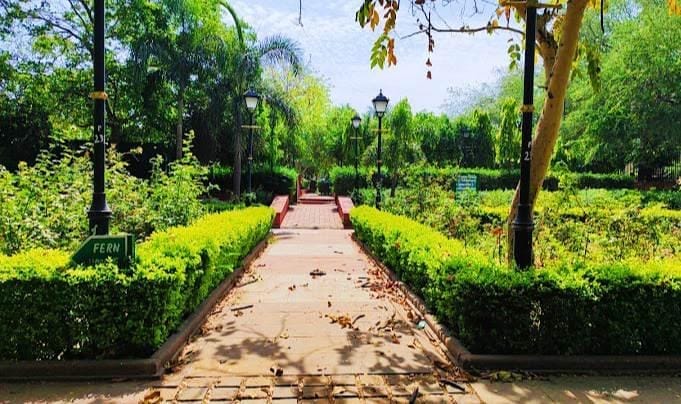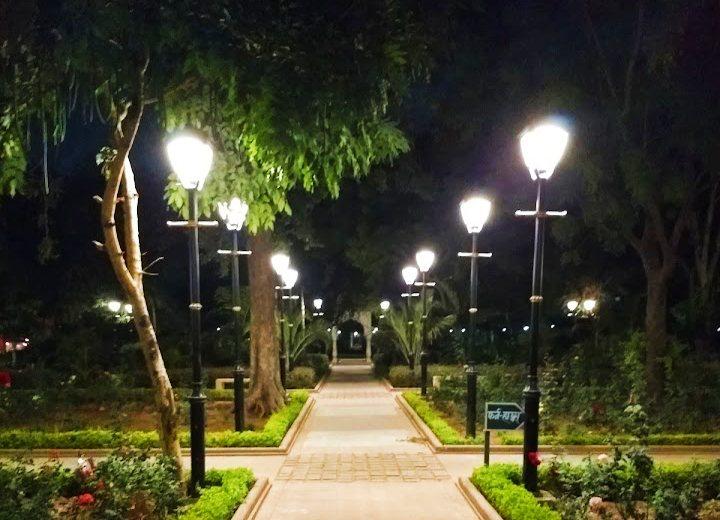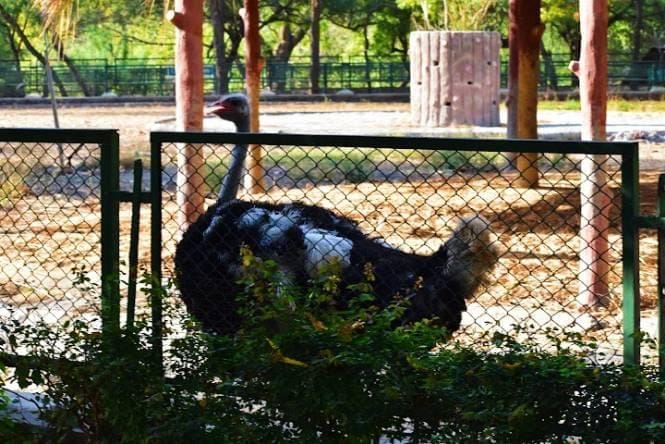Summary
Ramniwas Bagh, built in 1868 by Maharaja Sawai Ram Singh II in Jaipur, was a famine relief project. Designed by Colonel Sir Samuel Swinton Jacob, it spans 30 acres and features the Albert Hall Museum, a zoo, bird park, and gardens, blending Mughal and Victorian architectural styles.
Location
- Jawahar Lal Nehru Marg, near albert hall, Ram Niwas Garden, Adarsh Nagar, Jaipur, Rajasthan 302001
⬇️Tap on “View larger map” to get Direction
Full Story
Ramniwas Bagh, located in the heart of Jaipur, Rajasthan, is a historic garden complex that serves as a serene retreat amidst the bustling city. Built during the reign of Maharaja Sawai Ram Singh II in the 19th century, it is a fine example of Rajput architecture and landscape design. The garden complex is home to several important cultural and historical landmarks, including the Albert Hall Museum, making it a significant part of Jaipur’s heritage. Here’s a detailed exploration of its history, architecture, and cultural significance:
Historical Background
- Construction and Founding:
- Ramniwas Bagh was established in 1868 by Maharaja Sawai Ram Singh II, the ruler of Jaipur, as part of a famine relief project.
- The garden was designed to provide employment to the local population during a period of drought and famine, reflecting the Maharaja’s commitment to his people.
- Purpose and Vision:
- The garden was envisioned as a public space for recreation, leisure, and cultural activities.
- It was also intended to serve as a royal retreat for the Maharaja and his family, offering a peaceful escape from the palace.
- Albert Hall Museum:
- The most prominent structure within Ramniwas Bagh is the Albert Hall Museum, which was built in 1876 to commemorate the visit of the Prince of Wales, Albert Edward.
- The museum was designed by Sir Samuel Swinton Jacob and is one of the oldest museums in Rajasthan.
Architectural and Landscape Design
Ramniwas Bagh is a beautiful blend of landscaped gardens and architectural marvels, reflecting the aesthetic sensibilities of the Rajput era.
- Garden Layout:
- The garden is spread over a vast area and features manicured lawns, flower beds, and tree-lined pathways.
- The design incorporates elements of Mughal and Rajput garden styles, with symmetrical layouts and water features.
- Albert Hall Museum:
- The Albert Hall Museum is a stunning example of Indo-Saracenic architecture, blending Indian, Islamic, and European styles.
- The building features arched windows, domed pavilions, and intricate carvings, making it a visual masterpiece.
- Other Structures:
- The garden complex includes several other structures, such as pavilions, fountains, and statues, adding to its aesthetic appeal.
- The Ravindra Rang Manch, an open-air theater, is also located within the garden and hosts cultural events and performances.
Cultural and Historical Significance
- Public Space:
- Ramniwas Bagh was one of the first public gardens in Jaipur, providing a space for recreation and leisure for the city’s residents.
- It continues to be a popular destination for locals and tourists, offering a peaceful retreat amidst the urban landscape.
- Albert Hall Museum:
- The Albert Hall Museum is a major cultural landmark, housing a vast collection of artifacts, including paintings, sculptures, textiles, and armor.
- The museum plays a crucial role in preserving and promoting Rajasthan’s cultural heritage.
- Tourist Attraction:
- Ramniwas Bagh is a must-visit destination for tourists exploring Jaipur, offering a blend of history, architecture, and natural beauty.
- The garden’s serene environment and the museum’s rich collections make it a favorite spot for history enthusiasts and culture lovers.
- Cultural Events:
- The garden complex hosts various cultural events, exhibitions, and performances, particularly at the Ravindra Rang Manch.
- These events provide a platform for local artists and performers to showcase their talent.
Interesting Facts About Ramniwas Bagh
- The garden was initially designed as a famine relief project, providing employment to thousands of people during a period of drought.
- The Albert Hall Museum was inspired by the Victoria and Albert Museum in London, reflecting the cultural exchange between India and Britain during the colonial era.
- Ramniwas Bagh is home to a variety of bird species, making it a popular spot for birdwatching.
Conclusion
Ramniwas Bagh is a historic and cultural gem in the heart of Jaipur, offering a unique blend of natural beauty, architectural brilliance, and historical significance. Its lush gardens, the iconic Albert Hall Museum, and its role as a public space make it a must-visit destination for anyone exploring the Pink City. Whether you’re a history enthusiast, a nature lover, or a culture seeker, Ramniwas Bagh provides a serene and enriching experience. It stands as a testament to the vision and legacy of Maharaja Sawai Ram Singh II and his commitment to the well-being and cultural enrichment of his people.




















































































Reviews
There are no reviews yet.